|
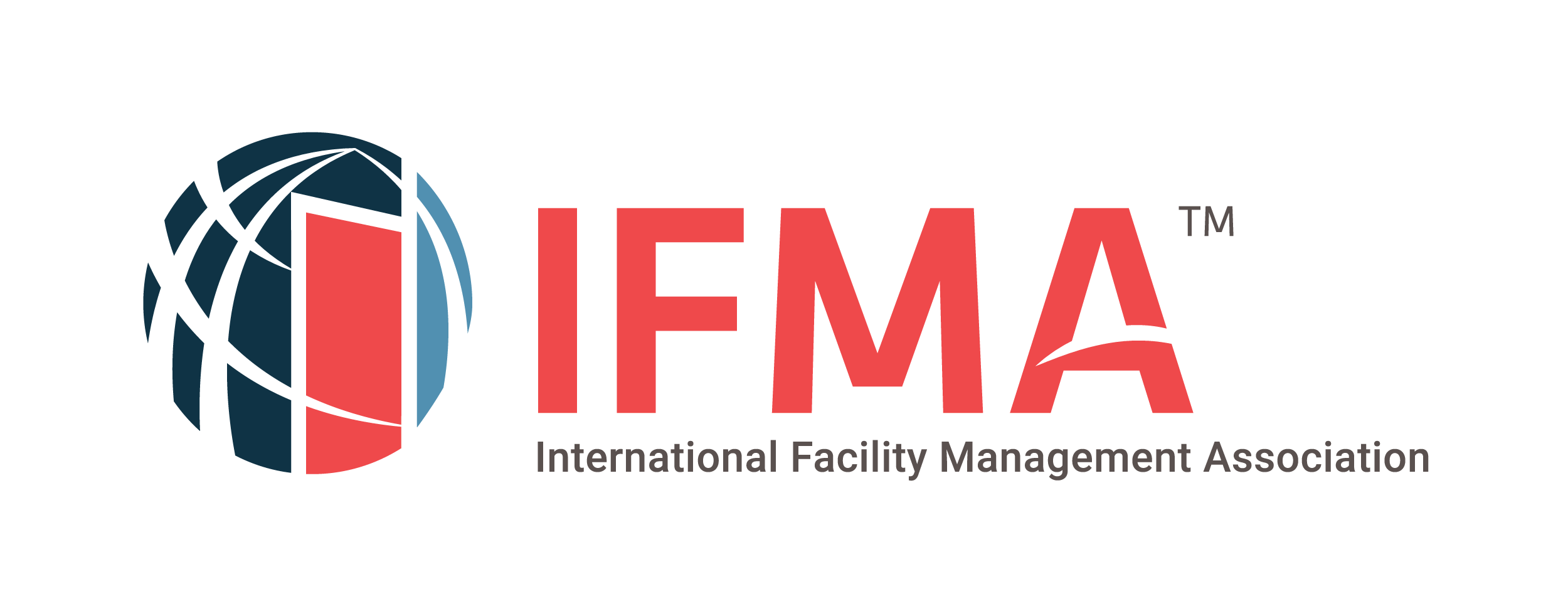
|
 |
| - |
|
IFMA has partnered with ASHRAE eLearning to provide you with continuing learning opportunities. Enroll into ASHRAE eLearning today!
Courses can only be purchased one at a time to receive your IFMA coupon discount.
Repeat the process for multiple purchases.
You will receive an email confirmation after checkout.
|
Central Plants | Controls | Data Centers | Energy Efficiency | Indoor Air Quality | Operation and Maintenance | Refrigerants | Thermodynamics and Psychrometrics
Central Plants
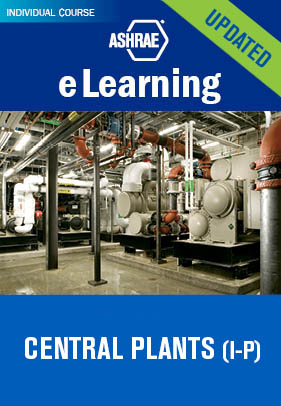
Central Plants (IP)
Central Plants | Essentials Level II | 2 PDHs
This course covers the major equipment that comprise central plants. Topics include equipment sizing, plant configurations, efficiency impacts, and metrics, among others. The course identifies how the individual components work, and how they operate together as a central plant. (I-P), 2.0 PDHs. AIA approved.
Details: This course covers the major equipment that comprise central plants. Topics include equipment sizing, plant configurations, efficiency impacts, and metrics, among others. The course identifies how the individual components work, and how they operate together as a central plant.
By the end of this course you will be able to:
- Understand the basic components and purpose of a central plant
- Evaluate the benefits and drawbacks to central and local building plants
- Gain a working knowledge of the interactions between equipment types
- Understand the following for boilers, chillers, and cooling towers:
- Role of each system and component
- General sizing criteria
- Interaction with other systems
Non-Member Price: $60.00
Use discount code IFMACENPLIP for a 10% discount | Add to Cart
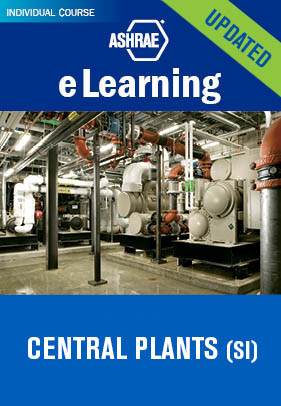
Central Plants (SI)
Central Plants | Essentials Level II | 2 PDHs
This course covers the major equipment that comprise central plants. Topics include equipment sizing, plant configurations, efficiency impacts, and metrics, among others. The course identifies how the individual components work, and how they operate together as a central plant. (SI), 2.0 PDHs. AIA approved.
Details: This course covers the major equipment that comprise central plants. Topics include equipment sizing, plant configurations, efficiency impacts, and metrics, among others. The course identifies how the individual components work, and how they operate together as a central plant.
By the end of this course you will be able to:
- Understand the basic components and purpose of a central plant
- Evaluate the benefits and drawbacks to central and local building plants
- Gain a working knowledge of the interactions between equipment types
- Understand the following for boilers, chillers, and cooling towers:
- Role of each system and component
- General sizing criteria
- Interaction with other systems
Non-Member Price: $60.00
Use discount code IFMACENPLSI for a 10% discount | Add to cart
return to top
Controls
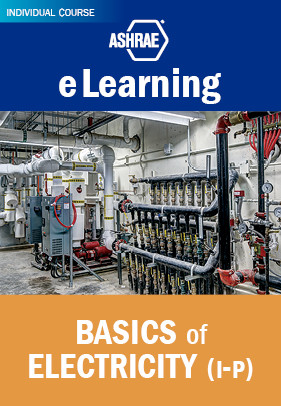
Basics of Electricity (IP)
Controls | Essentials Level I | 4.5 PDHs
This course provides the electrical knowledge needed to understand controls and the use of electrical circuit drawings. (I-P), 4.5 PDHs. AIA approved.
Details: This course provides the electrical knowledge needed to understand controls and the use of electrical circuit drawings. After completing this course, you will be able to: Apply basic electricity concepts to simple electrical circuits; Calculate volts, watts, and amps using Ohm’s law and the Power law.
Non-Member Price: $55.00
Use discount code IFMABASICSELIP for a 10% discount | Add to cart
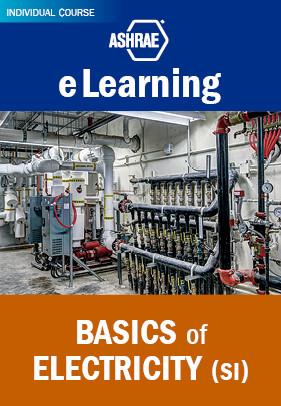
Basics of Electricity (SI)
Controls | Essentials Level I | 4.5 PDHs
This course provides the electrical knowledge needed to understand controls and the use of electrical circuit drawings. (SI), 4.5 PDHs. AIA approved.
Details: This course provides the electrical knowledge needed to understand controls and the use of electrical circuit drawings. After completing this course, you will be able to: Apply basic electricity concepts to simple electrical circuits; Calculate volts, watts, and amps using Ohm’s law and the Power law.
Non-Member Price: $55.00
Use discount code IFMABASICSELSI for a 10% discount | add to cart
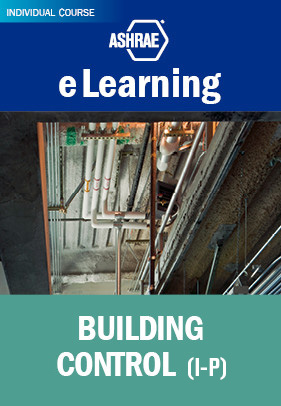
Building Control (IP)
Control | Essentials Level II | 2.5 PDHs
This course discusses how building control increases efficiency and help in achieving LEED credit points. (I-P), 2.5 PDHs. AIA and GBCI approved.
Details: This course discusses how building control increases efficiencies and help in achieving LEED credit points. Upon completion of this course, you will understand: How building controls may reduce total energy and water use; The importance of building controls in providing good building IEQ; Issues involved with commissioning of control systems; How building controls can help a project achieve LEED credit points; How building controls can help continued efficient operation of the building after occupancy.
Non-Member Price: $55.00
Use discount code IFMABLDGCTRL for a 10% discount | add to cart
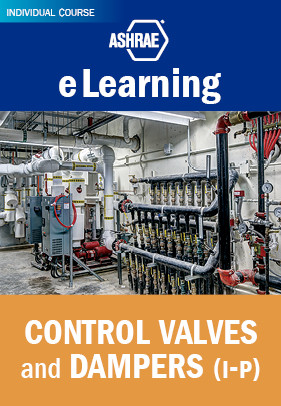
Control Valves and Dampers (IP)
Controls | Essentials Level I | 6.5 PDHs
This course teaches the various types of valves and dampers, and their selection, installation and operation. (I-P), 6.5 PDHs. AIA approved.
Details: This course teaches the various types of valves and dampers, and their selection, installation and operation. After completing this course, you will be able to: Identify valve parts and valve types; Select valves based on their characteristics for various applications; Discriminate between 2-way and 3-way valve characteristics and performance; Calculate pressure drop and the valve flow coefficient; Recognize the types and appropriate uses of dampers for air flow control in various applications; Understand damper leakage ratings and how they are used; Determine damper pressure drops; Determine damper size.
Non-Member Price: $55.00
Use discount code IFMACTRLVADMIP for a 10% discount | add to cart
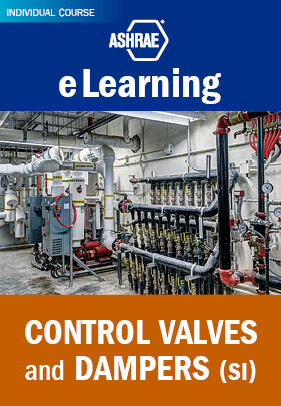
Control Valves and Dampers (SI)
Controls | Essentials Level I | 6.5 PDHs
This course teaches the various types of valves and dampers, and their selection, installation and operation. (SI), 6.5 PDHs. AIA approved.
Details: This course teaches the various types of valves and dampers, and their selection, installation and operation. After completing this course, you will be able to: Identify valve parts and valve types; Select valves based on their characteristics for various applications; Discriminate between 2-way and 3-way valve characteristics and performance; Calculate pressure drop and the valve flow coefficient; Recognize the types and appropriate uses of dampers for air flow control in various applications; Understand damper leakage ratings and how they are used; Determine damper pressure drops; Determine damper size.
Non-Member Price: $55.00
Use discount code IFMACTRLVADMSI for a 10% discount | add to cart
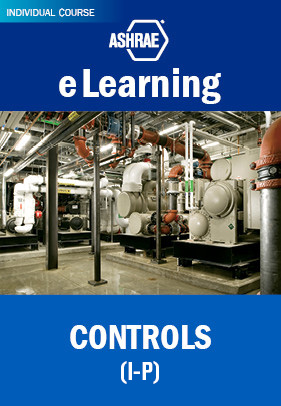
Controls (IP)
Controls | Essentials Level I | 2.5 PDHs
This course covers the types of controls and control loops, DDC point types and protocol to ensure communication between DDC systems. (I-P), 2.5 PDHs. AIA and GBCI approved.
Details: Understanding types of controls and control loops, DDC point types and protocol to ensure communication between DDC systems. Upon completion of this course you will be able to: Identify the different types of controls; Understand and identify open and closed control loops; Recognize the DDC point types and their use; Understand the use of BACnet®.
Non-Member Price: $55.00
Use discount code IFMACTRLSIP for a 10% discount | add to cart
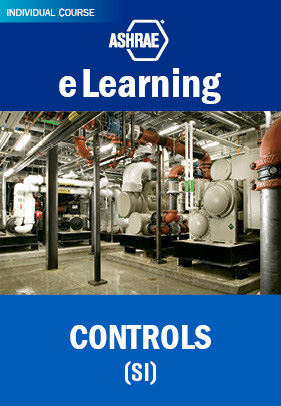
Controls (SI)
Controls | Essentials Level I | 2.5 PDHs
Understanding types of controls and control loops, DDC point types and protocol to ensure communication between DDC systems. (SI), 2.5 PDHs. AIA and GBCI approved.
Details: Understanding types of controls and control loops, DDC point types and protocol to ensure communication between DDC systems. Upon completion of this course you will be able to: Identify the different types of controls; Understand and identify open and closed control loops; Recognize the DDC point types and their use; Understand the use of BACnet®.
Non-Member Price: $55.00
Use discount code IFMACTRLSSI for a 10% discount | add to cart
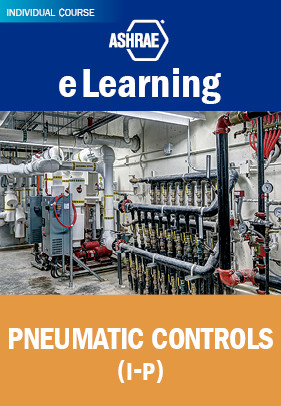
Pneumatic Controls (IP)
Controls | Essentials Level II | 3 PDHs
This course provides instruction on the components of pneumatic systems and control applications diagrams. (I-P), 3.0 PDHs. AIA approved.
Details: This course provides instruction on the components of pneumatic systems and control applications diagrams. After completing this course, you will be able to: Recognize terms related to pressure and its measurement; Recognize how bleed and non-bleed thermostats and controllers operate; Comprehend the range of components available in pneumatic controls; Be familiar with common HVAC pneumatic control applications diagrams.
Non-Member Price: $55.00
Use discount code IFMAPNEUMCTRL for a 10% discount | add to cart
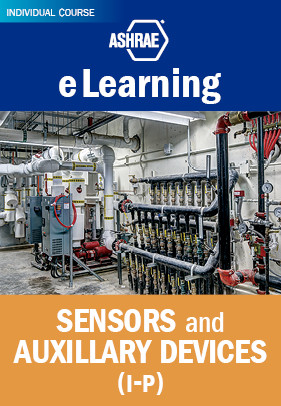
Sensors and Auxiliary Devices (IP)
Controls | Essentials Level I | 7.5 PDHs
This course teaches sensor terminology and attributes, selection of moisture sensors, pressure, flow, and auxiliary devices. (I-P), 7.5 PDHs. AIA approved.
Details: This course teaches the terminology and attributes of sensors, the selection of moisture sensors, pressure, flow, and auxiliary devices. After completing this course, you will be able to: Recognize: The various types of temperature sensors; The various types of moisture sensors; How differential pressure is sensed; The use of auxiliary devices common to control systems. Select: Temperature sensors based on their features and parameters; Air and water flow sensors for the HVAC applications for which they are best suited; Moisture sensors based on their features and parameters. Use the psychrometric chart to assess moisture and energy load; Understand the process of interpreting data to determine if a sensor is working properly; Identify terms related to pressure and its measurement.
Non-Member Price: $55.00
Use discount code IFMASENAUXDEV for a 10% discount | add to cart
return to top
Data Centers
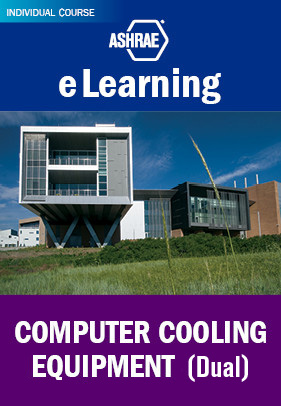
Computer Cooling Equipment (Dual)
Data Centers | Advanced | 1 PDHs
This module discusses initial and final load densities and the options of using air cooling versus liquid cooling versus a combination to cool equipment. (Dual), 1.0 PDH. AIA approved.
Details: Trends and predesign phase load calculation methods provide insights, which can help establish the design criteria for the load that the facility will most likely be required to support today, and in the future. This module discusses initial and final load densities and the options of using air cooling versus liquid cooling versus a combination to cool equipment. Upon completion of this module, you will be able to: Explain various configurations of air cooling of computer equipment, including Cooling equipment: Outside the room; Inside the room but outside the rack; Physically mounted on the rack; Describe the importance of liquid cooling as a consideration and potential solution to high-density loads; Identify types of liquid used for enhanced heat transfer in liquid cooling equipment.
Non-Member Price: $55.00
Use discount code IFMACOMPCOOL for a 10% discount | add to cart
return to top
Energy Efficiency
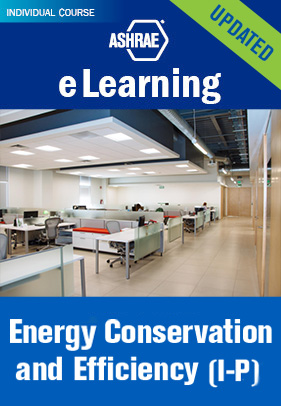
Energy Conservation (IP)
Energy Efficiency | Essentials Level I | 1.5 PDHs
The course gives an overview of energy conservation and energy efficiency, and differentiates the different ways that energy conservation and efficiency can be applied to both new and renovated buildings. An overview of ASHRAE 90.1 will be given along with methods of compliance with this standard. (I-P), 1.5 PDHs.
Details: The course gives an overview of energy conservation and energy efficiency, and differentiates the different ways that energy conservation and efficiency can be applied to both new and renovated buildings. An overview of ASHRAE 90.1 will be given along with methods of compliance with this standard.
By the end of this course, you will be able to:
- State the difference between energy conservation and energy efficiency
- Identify methods of energy conservation
- Outline the range of a building’s energy efficiency requirements of ANSI/ASHRAE/IES Standard 90.1
- List benefits of energy efficiency for new buildings
Non-Member Price: $60.00
Use discount code IFMAENERGY35 for a 10% discount | ADD TO CART
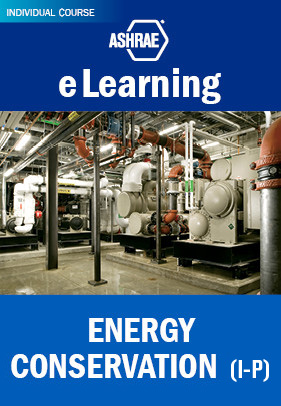
Energy Conservation (IP)
Energy Efficiency | Essentials Level II | 8.5 PDHs
This course discusses advanced techniques for energy conservation. (I-P), 8.5 PDHs. AIA and GBCI approved.
Details: This course discusses advanced techniques for energy conservation. Upon completion of this course, you will understand: When and where sustainable design can be implemented into plumbing systems; Water conservation strategies; The effect that other disciplines can have on Green Design; The importance of conserving water, and the positive effects it can have on our planet.
Non-Member Price: $55.00
Use discount code IFMAENERGY85 for a 10% discount | add to cart
return to top
Indoor Air Quality
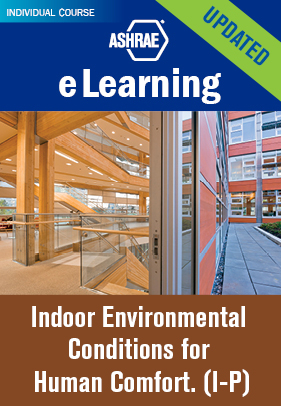
Indoor Environmental Conditions for Human Comfort (IP)
Indoor Air Quality | Essentials Level II | 1.5 PDHs
This course covers the basics of human comfort in the built environment. Topics covered include comfort and health criteria, thermal comfort, factors influencing thermal conditions, zoning, indoor air quality, limiting indoor air contaminants, and room air distribution. (I-P), 1.5 PDHs. AIA approved.
Details: This course covers the basics of human comfort in the built environment. Topics covered include comfort and health criteria, thermal comfort, factors influencing thermal conditions, zoning, indoor air quality, limiting indoor air contaminants, and room air distribution.
By the end of this course you will be able to:
- Identify the human factors that influence comfort in the built environment
- Recognize comfort and health criteria for the various spaces in the building
- Relate and apply specific standards and references for indoor environmental conditions for human comfort
- Use multiple tools to apply principles of thermal conditions to varying building scenarios
- Establish optimum zoning controls for select building spaces
- Set ventilation rates for occupied spaces to reduce contamination and provide oxygen
- Know and select appropriate HVAC system filters that reduce contamination and odors
- Plan distribution of air diffusers and grilles to achieve optimum building comfort
Non-Member Price: $60.00
Use discount code IFMAIECHUCOIP for a 10% discount | add to cart
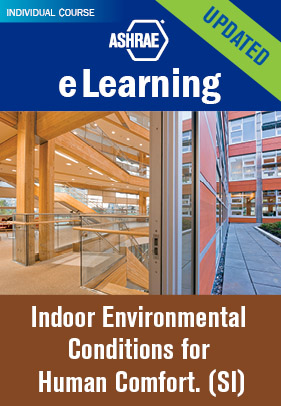
Indoor Environmental Conditions for Human Comfort (SI)
Indoor Air Quality | Essentials Level II | 2 PDHs
This course covers the basics of human comfort in the built environment. Topics covered include comfort and health criteria, thermal comfort, factors influencing thermal conditions, zoning, indoor air quality, limiting indoor air contaminants, and room air distribution. (I-P), 1.5 PDHs. AIA approved.
Details: This course covers the basics of human comfort in the built environment. Topics covered include comfort and health criteria, thermal comfort, factors influencing thermal conditions, zoning, indoor air quality, limiting indoor air contaminants, and room air distribution.
By the end of this course you will be able to:
- Identify the human factors that influence comfort in the built environment
- Recognize comfort and health criteria for the various spaces in the building
- Relate and apply specific standards and references for indoor environmental conditions for human comfort
- Use multiple tools to apply principles of thermal conditions to varying building scenarios
- Establish optimum zoning controls for select building spaces
- Set ventilation rates for occupied spaces to reduce contamination and provide oxygen
- Know and select appropriate HVAC system filters that reduce contamination and odors
- Plan distribution of air diffusers and grilles to achieve optimum building comfort
Non-Member Price: $60.00
Use discount code IFMAIECHUCOSI for a 10% discount | add to cart
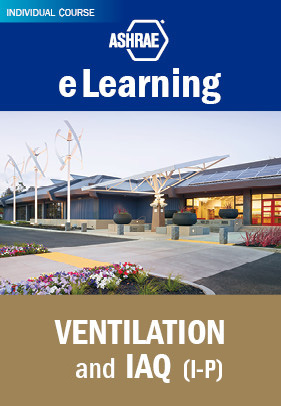
Ventilation and IAQ (IP)
Indoor Air Quality | Essentials Level II | 3 PDHs
This course covers air contaminants, their control, and the basic concepts of ASHRAE Standard 62.1. (I-P), 3.0 PDHs. AIA and GBCI approved.
Details: This course will provide you with an understanding of the types, sources and effects of air contaminants and how to control them, as well as the basic concepts of ASHRAE Standard 62.1. Upon completion of this course you will be able to: Identify types and sources of indoor air contaminants and pollutants; Comprehend the effects of pollutants and contaminants on health; Comprehend the basic concepts of the ASHRAE Ventilation Standard 62.1-2004.
Non-Member Price: $55.00
Use discount code IFMAVENTIAQIP for a 10% discount | add to cart
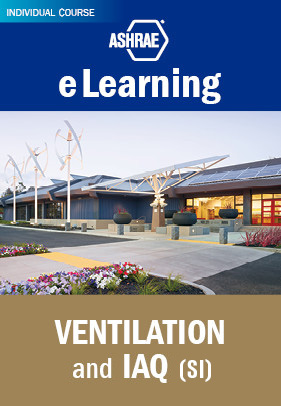
Ventilation and IAQ (SI)
Indoor Air Quality | Essentials Level II | 3 PDHs
This course covers air contaminants, their control, and the basic concepts of ASHRAE Standard 62.1. (SI), 3.0 PDHs. AIA and GBCI approved.
Details: This course will provide you with an understanding of the types, sources and effects of air contaminants and how to control them, as well as the basic concepts of ASHRAE Standard 62.1. Upon completion of this course you will be able to: Identify types and sources of indoor air contaminants and pollutants; Comprehend the effects of pollutants and contaminants on health; Comprehend the basic concepts of the ASHRAE Ventilation Standard 62.1-2004.
Non-Member Price: $55.00
Use discount code IFMAVENTIAQSI for a 10% discount | add to cart
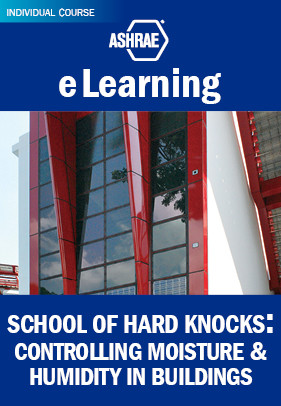
School of Hard Knocks: Controlling Moisture & Humidity in Buildings (Dual)
Indoor Air Quality | Intermediate | 3 PDHs
This course shows how dry buildings are healthier and more resilient, comfortable and energy-efficient than damp or moldy buildings. Dry buildings have better indoor air quality, and also cost less to operate, last longer, and hold less financial and professional risk for their designers and builders, given that moisture problems are the leading cause of claims against errors and omissions insurance of architects, engineers and contractors 3.0 PDHs. AIA and GBCI approved.
Details: This course shows how dry buildings are healthier and more resilient, comfortable and energy-efficient than damp or moldy buildings. Dry buildings have better indoor air quality, and also cost less to operate, last longer, and hold less financial and professional risk for their designers and builders, given that moisture problems are the leading cause of claims against errors and omissions insurance of architects, engineers and contractors. Based on decades of experience of designers, contractors and building owners, this course provides a wealth of lessons learned the hard way about moisture and humidity-related imperatives of design, both architectural and mechanical, and about moisture issues in construction and operation. The result of collaboration between the members of ASHRAE's Technical Committee 1.12 (Moisture Management in Buildings) and the Indoor Environments Division of the U.S. Environmental Protection Agency, this course uses case histories to illustrate and summarize what works, what doesn't and why.
Non-Member Price: $55.00
Use discount code IFMASCHOOLHK for a 10% discount | add to cart
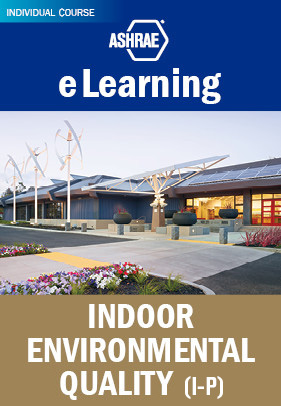
Indoor Environmental Quality (IP)
Indoor Air Quality | Intermediate | 4 PDHs
This course provides an overview of maintaining thermal conditions and new building design ideas. (I-P), 4.0 PDHs. AIA approved.
Details: This course provides an overview of maintaining thermal conditions and new building design ideas. Upon completion of this course you will understand: The five main areas that comprise "indoor environmental quality" (IEQ); What constitutes a thermally comfortable environment; Means for energy exchange, energy delivery methods and energy recovery options for outdoor air ventilation; Relationship between indoor air quality (IAQ) and the outdoor air quality, and how HVAC designs influence this interaction, How acoustical concern affect IEQ; New ideas on design of healthy buildings.
Non-Member Price: $55.00
Use discount code IFMAINDOORENVQ for a 10% discount | add to cart
return to top
Operation and Maintenance
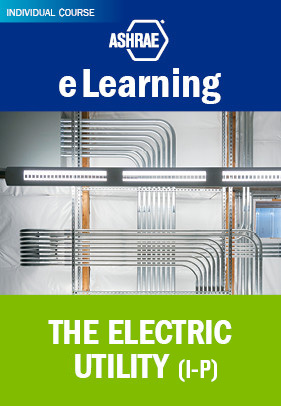
The Electric Utility (IP)
Operation and Maintenance | Essentials Level I | 1.25 PDHs
This course, discusses the most common pricing schemes used by utilities, and how charges are calculated in these schemes. (I-P), 1.25 PDHs. AIA approved.
Details: Electric utilities use different schemes and service rate schedules when pricing electricity. The service rate schedules can be based on a combination of electrical energy use, electrical demand, power factor, time-of-use, acceptance of power interruptions, and on-site power generating capabilities. Designed for individuals who deal with electric energy costs, in this course, you will learn about the most common pricing schemes used by utilities, and how charges are calculated in these schemes. The course also describes a typical electricity bill and demonstrates through examples how—given the utility rate schedule and the projected energy use pattern—the projected electric energy costs may be calculated. After completing this course, you will be able to: Explain: Why electric utilities use different service rate schedules; How to reduce electric demand; The driving mechanism behind on-site power generation credits; The pros and cons of electric utility rebate programs. Describe the: Different types of electric energy use charge rates; Different types of electric demand charge rates; Different types of electric power penalty charges. Apply the: Different electric energy use charge rates to calculate electric energy use costs; Different electric demand charge rates to calculate electric demand costs. Read an electric meter to determine kWh use and peak demand. Calculate average power factor from meter readings. Find the Service type, Billing dates, Breakdown of charges, and Total monthly charges on any electric utility bill. Evaluate and justify the costs that are found on a utility bill.
Non-Member Price: $55.00
Use discount code IFMAELECUTIL for a 10% discount | add to cart
return to top
Refrigerants
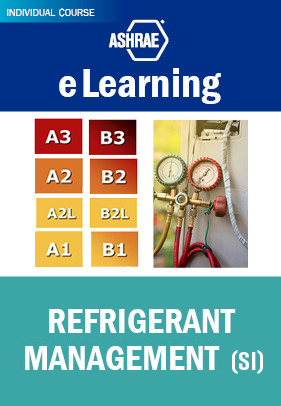
Refrigerant Management (SI)
Refrigerants | Essentials Level I | 1.5 PDHs
This course provides an introduction to refrigerant management, identifying for non-specialists the rationales behind the practices that should be followed to satisfy safety and regulatory concerns. The course consists of 2 lessons.
Details: This course provides an introduction to refrigerant management, identifying for non-specialists the rationales behind the practices that should be followed to satisfy safety and regulatory concerns. The course consists of 2 lessons. Lesson 1 covers management, including management plan, identification and testing, containers (types and color codes), and storage and handling. Lesson 2 covers servicing, including containment during servicing and installations (good practices), recovery, recycling and reclamation, labeling and record keeping, training and certification, standards and codes, safe disposal, and green procurement.
Non-Member Price: $60.00
Use discount code IFMAREFMGMT for a 10% discount | add to cart
return to top
Thermodynamics and Psychrometrics
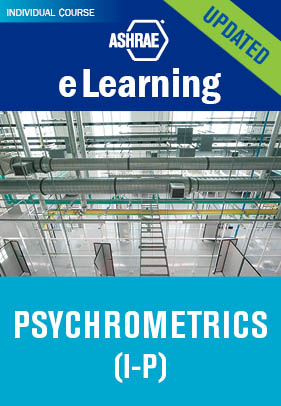
Psychrometrics (IP)
Thermodnyanics and Psychrometrics | Essentials Level II | 1.5 PDHs
This course covers the theory behind and use of the psychrometric chart, the origin of the chart and how it is used in the process of determining HVAC requirements. This course will familiarize the learner with the use of the chart and the information that can be determined for atmospheric air knowing two of the conditions of that air. Learn about the four processes that can be determine by using the chart (heating, cooling, humidification and dehumidification). (I-P), 1.5 PDHs. AIA approved.
Details: This course covers the theory behind and use of the psychrometric chart, the origin of the chart and how it is used in the process of determining HVAC requirements. This course will familiarize the learner with the use of the chart and the information that can be determined for atmospheric air knowing two of the conditions of that air. Learn about the four processes that can be determine by using the chart (heating, cooling, humidification and dehumidification).
By the end of this course you will be able to:
- List basic principles upon which the psychrometric chart is based and how the chart came to be used within the HVAC&R industry
- Describe the thermodynamic properties that affect air conditioning, and how they are represented on the chart (Dry-bulb temperature, Wet-bulb temperature, Humidity ratio, Enthalpy, Relative humidity, Specific volume)
- Discuss the HVAC processes that are represented on the psychrometric chart, such as humidification, dehumidification, heating, cooling, heating and humidification, heating and dehumidification, cooling and humidification, cooling and dehumidification
- Explain how to calculate the airflow required to cool a space.
Non-Member Price: $60.00
Use discount code IFMAPSYCHROIP for a 10% discount | add to cart

Psychrometrics (SI)
Thermodnyanics and Psychrometrics | Essentials Level II | 1.5 PDHs
This course covers the theory behind and use of the psychrometric chart, the origin of the chart and how it is used in the process of determining HVAC requirements. This course will familiarize the learner with the use of the chart and the information that can be determined for atmospheric air knowing two of the conditions of that air. Learn about the four processes that can be determine by using the chart (heating, cooling, humidification and dehumidification). (SI), 1.5 PDHs. AIA approved.
Details: This course covers the theory behind and use of the psychrometric chart, the origin of the chart, and how it is used in the process of determining HVAC requirements. This course will familiarize the learner with the use of the chart and the information that can be determined for atmospheric air knowing two of the conditions of that air. Learn about the four processes that can be determined by using the chart (heating, cooling, humidification, and dehumidification).
By the end of this course you will be able to:
- List basic principles upon which the psychrometric chart is based and how the chart came to be used within the HVAC&R industry
- Describe the thermodynamic properties that affect air conditioning, and how they are represented on the chart (Dry-bulb temperature, Wet-bulb temperature, Humidity ratio, Enthalpy, Relative humidity, Specific volume)
- Discuss the HVAC processes that are represented on the psychrometric chart, such as humidification, dehumidification, heating, cooling, heating and humidification, heating and dehumidification, cooling and humidification, cooling and dehumidification
- Explain how to calculate the airflow required to cool a space.
Non-Member Price: $60.00
Use discount code IFMAPSYCHROSI for a 10% discount | add to cart
return to top